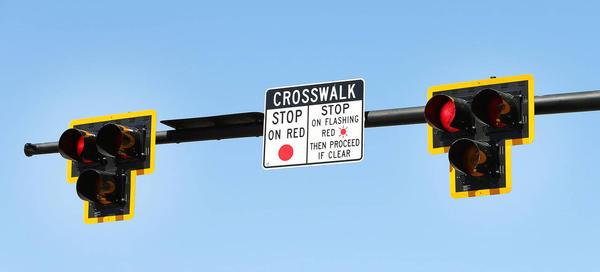Four years after District officials unveiled a program aimed at cutting down on the number of transportation injuries and fatalities in the region, the results have not gone completely as expected, though 2019 deaths are down.
Since 2015, traffic fatalities have gone up each year, according to the Metropolitan Police Department. The 36 fatalities last year was the most since 2008 with 39. In 2019, there have been 25 fatalities through Dec. 10.
The Vision Zero Initiative goal is intended to draw down the number of serious injuries and fatalities in D.C. by 2024 using more effective use of data, education, enforcement and engineering.
According to the D.C. Zero Vision data, although serious injuries were lowered for nearly all modes of transportation, fatalities increased for all modes of transportation in 2017.
Mayor Muriel Bowser started the Vision Zero DC Action Plan with 30 district agencies aiming for zero traffic-related deaths in the city by 2024. At the time, she said her administration intended to change transportation safety culture for the long term.
The overall end goal is that there will be zero fatalities and serious injuries to travelers of the transportation system in Washington D.C. by the year 2024. The plan is to make these fatalities and injuries nonexistent through the use of data, and the three E’s of education, enforcement and engineering.
The data aspect of it will analyze and set up interventions that have the greatest potential to eliminate serious injuries and fatalities. The engineering will identify specific locations throughout the District that require new safe street designs and interventions. The Education and enforcement will protect the most vulnerable travelers.

One of those changes was making Linda Bailey Director of the Vision Zero Office in March 2018.
In a DDOT press release, Bailey said, “I’m proud to have the opportunity to serve the residents of the District of Columbia and broaden the mission of Vision Zero. I am grateful to Mayor Bowser and Director Marootian for their confidence in me, and I am committed to promoting safety, and the kind of innovation that builds on DDOT’s position as a leader among the nation’s transportation agencies.”
Bailey brings much experience to the District and will oversee a team of engineering, policy, and community outreach staff. Bailey was the former Executive Director National Association of City Transportation Officials where she developed transportation policies. She also worked for the New York City Department of Transportation where she helped with their Vision Zero Program. During her time there, traffic deaths have declined for five consecutive years, according to city data. Since 2005, fatalities have decreased by 34%.

Since Bailey joined as Director, an expanded sidewalk maintenance effort has filled 123 gaps in sidewalks — triple the original goal of 40. And, a paving plan, aiming to eliminate all poor-quality roads in the District by 2024, has seen 16 streets completed in the last two weeks.
Computer technician Ralph Williams says uneven streets and sidewalks are a bigger problem than people think.
“I used to be at the dealership every other week because of the bad roads out here,” Williams said. “I also broke my ankle on a sidewalk in the city because I was on my phone and didn’t see an uneven sidewalk. Stepped in a hole and next thing you know, I’m in the hospital.”
In order to ensure safety, the District Department of Transportation has installed more signage, marking modifications and automated crosswalks at more than 20 intersections since the project began in 2015.

One of those improvements include The High Intensity Activated Crosswalks, or HAWK signals, which stop road traffic and allow pedestrians to cross in a safer environment on marked lanes.
As of 2018, D.C. had a total of 17 HAWK signals, more than any other city on the East Coast, according to the Vision Zero Data.

In 2017, the District became more bike-friendly with the installation of 16 bike stations to the Capital Bikeshare fleet.
Brandon Hines rides his bicycle to work every day through Dupont Circle and enjoys the stations and safety of the streets.
“It’s nice to finally have more stations around the city,” Hines said. “I also noticed that there has been more traffic lights, signals and more signs to direct and control traffic in a better way. Hopefully these things will help cut down the traffic deaths in D.C.”
DDOT did not respond to multiple requests to comment.
The next steps for the Vision Zero initiative is to put more signage, traffic signals, HAWK signals and pave more sidewalks to make the District a safer place for pedestrians and bicyclists.















Add comment